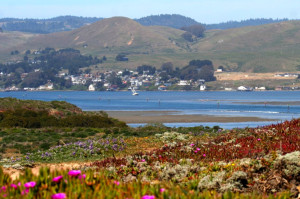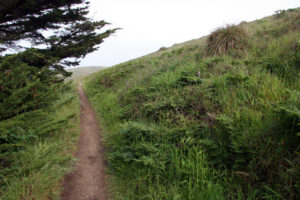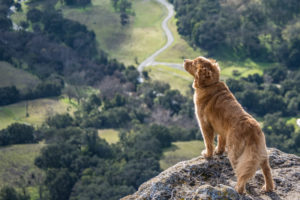
If you’re looking to combine a stunning walk with a deeper contemplation of the cosmos, the PlanetWalk Trail, in Sonoma County’s Sugarloaf Ridge State Park, fits the bill. In a matter of hours, hikers can, figuratively speaking, travel to the edge of the solar system and back.
Designed by docents at the state park’s Robert Ferguson Observatory, the hike squeezes the solar system—all 3.67 billion miles of it—into a 2.25-mile walk to its outer reaches. Along the way, placards mark the relative distance to each of the nine planets (sorry, Neil deGrasse Tyson, here Pluto remains part of the planetary family).
The journey begins at a sign near the observatory painted with a yellow sun only a few feet in diameter—shrunk by almost 2.5 billion times. At this diminutive scale, every step equals roughly a million miles. The four innermost planets—Mercury, Venus, Earth, and Mars—are within a few hundred paces of the sun. But it takes roughly 4,000 steps to reach Pluto, atop a distant ridgeline 2.25 miles away and 1,000 feet above.
Beyond Jupiter, the mock solar system begins to sprawl, revealing the immense distances to and—perhaps more startlingly—between the outer planets. Nearly a mile from the trailhead lies Saturn, in a lovely grove of sycamores beside Sonoma Creek. Here the trail steepens, switchbacking through a gorge of black oak, gray pine, and the occasional blood-red madrone on the approach to Uranus.
A lovely paradox underscores the journey. Space is a vacuum. But the PlanetWalk allows you to contemplate that emptiness amid the bustling life of Sugarloaf Ridge, where California quails burble in the undergrowth and hawks cruise on thermals overhead.
Atop a high ridge with commanding views of the Coast Ranges perches Neptune. The final mile to Pluto is steep and fairly rugged, ascending roughly 350 feet in just under a mile. As you climb, look for the blue-gray mass of Mount Diablo, roughly 50 miles to the southeast.
If you are up to it, continue past Pluto to Brushy Peak’s 2,200-foot eastern summit, where a picnic table and vast panorama awaits. On a clear day, hikers can glimpse Mount Tamalpais’s triangular summit. Below, the observatory dome is a distant speck set against the greenery of Sonoma County.
About the PlanetWalk
The Trail
A moderately strenuous 4.5-mile round trip to the edge of the solar system and back. The trail gets progressively harder as you ascend, with roughly 1,000 feet from meadow to forested gorge to the shrub-covered slopes of Brushy Peak.
The Draw
The journey challenges walkers to contemplate the vast distances of the cosmos on this trip of two to three hours amid the scenic wonders of Sonoma County. The Robert Ferguson Observatory is also open to the public, hosting star parties and other events throughout the year. Visit rfo.org for details.
Access and Facilities
The first mile of the PlanetWalk traverses the Meadow Trail, which is smooth and easily negotiated by most hikers. The second half of the journey, which ascends a steep ridge, requires stamina and sturdy walking shoes. The observatory building itself (Google map here) is accessible with ramps. Restrooms and two of the observatory’s telescopes are also accessible.




